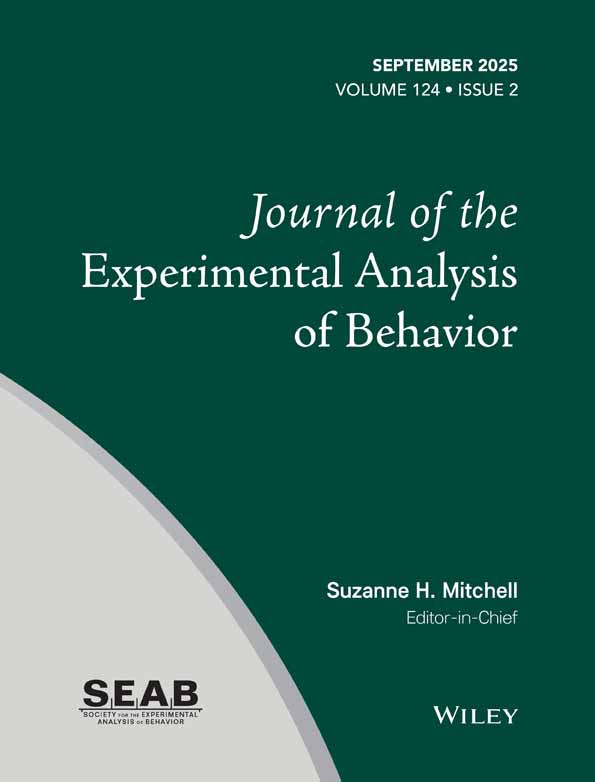STEADY STATE RESPONDING BASED UPON SIMPLE AND COMPOUND STIMULI1
This paper is based upon a thesis submitted to the Department of Psychology of Brown University in partial fulfillment of the requirements for the degree of Master of Science. A version of this thesis was presented at the meetings of the Eastern Psychological Association, Boston, 1972. The author is grateful to Donald S. Blough for his valuable suggestions during the course of the experiment, and to Donald S. Blough, Deborah G. Kemler, and Bryan E. Shepp for their careful criticisms of the manuscript. My thanks are also extended to Sheila Chase and David J. Getty for their assistance in the statistical treatment of the data. This work was supported by fellowship 5F01MH4816902 awarded to the author and by grant MH02456 awarded to Donald S. Blough.
Abstract
Two pigeons were trained to perform discrimination tasks along two dimensions, wavelength of a circular spot of light and orientation of a white line. Discriminability among stimuli along these dimensions was established for both subjects by means of a steady state testing procedure. The two dimensions were then combined by superimposing the white line upon the colored background. Subjects were given a series of tests in which a correct response could be made on the basis of either of the two components of the stimulus compounds. Discriminability among these redundant compound stimuli was found to be better than that among wavelength and tilt stimuli alone. A second series of tests was administered using both redundant and conflicting compound stimuli. The results of this test series are consistent with a response strategy in which subjects first examine both elements of a compound and then emit a choice response on the basis of the element that best predicts reinforcement.




